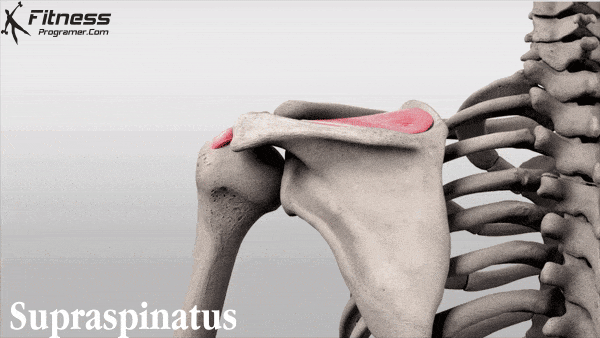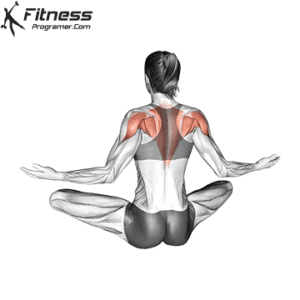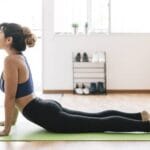Welcome to the world of scapular stabilisation and rotator cuff strengthening exercises!
The scapula, known as the shoulder blade, serves as the crucial foundation for the shoulder joint and facilitates all upper extremity movements. Its stability is paramount in maintaining optimal shoulder function and preventing various upper quadrant syndromes, including shoulder impingement, instability, cervical strain, nerve entrapments, and muscle strains.
In this exercise regimen, our focus is on enhancing scapular stabilisation and strengthening the rotator cuff muscles to promote overall shoulder health and functionality. To perform these exercises, you will need Therabands, which are rubber bands that can be obtained from your physical therapist or purchased at a sporting goods store. Additionally, light free weights such as 2-3 lb. dumbbells will be useful, but if these are not readily available, simple household items such as a can of soup may be used instead.
It’s imperative to maintain proper shoulder alignment throughout the exercises by rolling the shoulders back and down, ensuring optimal engagement of the scapular muscles. Complete this program 3-4 times /week to keep the shoulder strong and healthy. Each exercise should be performed for both shoulders.
Incorporating these exercises into your routine and emphasising scapular stabilisation and rotator cuff strengthening can significantly decrease the risk of injury and improve the efficiency of upper body movements. So, let’s embark on this journey towards stronger, more stable shoulders and a healthier upper body!
Scapular anatomy
Exercices :
A) Scapular Retraction (Shoulder Blade Squeezes)
Perform Scapular Retraction, or Shoulder Blade Squeezes, by relaxing your head and neck and standing correctly. Focus on squeezing your shoulders back without shrugging them while keeping your abs engaged.
Hold this position for 10 seconds before relaxing your shoulders. Repeat this movement ten times in total.Complete one set of this exercise three times a day.
B) External Rotation
Perform External Rotation exercises by attaching the Theraband to a stable object at waist level. Roll your shoulders back and down, maintaining this position throughout the exercise.
Place a towel between your elbow and side to maintain proper alignment. Slowly rotate your hand away from your abdomen, focusing on the outward movement.
Hold this position for 3 seconds before returning to the starting position. Aim to complete 12-15 repetitions of this movement.
Complete one set of External Rotation exercises three times a day
c)Internal Rotation
Perform Internal Rotation exercises by attaching the Theraband at waist level, using a doorknob or post. Stand sideways to the door and maintain a forward gaze. Grasp one end of the handle and pull the cord until it is taut.
Keep your elbow next to your side, flexed at a 90-degree angle, resembling a hinge on a gate, with the cord in hand, “set” the shoulder blade and move your hand toward your belly as far as it feels comfortable, or until you reach the endpoint of pain limitation. Return to the starting position.
Complete two sets of 20 repetitions of this exercise to strengthen your internal rotation muscles.
D) Lateral Raises
Stand with your arm at your side, ensuring the elbow remains straight and the hands are rotated so the thumbs face forward. Lift the arm straight out to the side, with the palm facing downward, until the hands reach shoulder level. Be cautious not to raise your hands higher than your shoulders. Pause briefly at the movement’s peak, then slowly lower the arm.
Perform two sets of 12 repetitions of this exercise to engage and strengthen the lateral deltoid muscles effectively.
E) Shoulder Diagonals
Stand with the Theraband secured under your opposite foot. Grasp the Theraband and gently draw your shoulders back and down. With your hand positioned at your opposite hip, smoothly raise it across your body as if executing a sword-drawing motion.
Hold this position for 3 seconds before lowering, and aim to repeat this movement 12-15 times. Perform one set of repetitions three times a day.
F) Shoulder Extension

Perform Shoulder Extension exercises by securing
the Theraband around a stable object, such as a pole. You can choose to either kneel or stand for this exercise. Grasp both ends of the Theraband while ensuring your shoulders are brought back and down.
With your arms extended, slowly pull your hands straight down until they are even with your hips. Hold this position for 3 seconds before releasing, and aim to complete 12-15 repetitions.
Complete one set of this exercise three times a day.
G) Active: Push with a plus

Engage in the Active Push with a Plus exercise by beginning in a push-up position with your hands shoulder-width apart. Maintain alignment with your back and hips.
Push through your hands while keeping your elbows straight, then return to the starting position.
Complete three sets of 15 repetitions of this exercise thrice weekly to enhance shoulder strength and endurance.
H )Physioball Scapular Exercises – Rolling Up and Down:

Stand with your hand placed on a physioball against a wall. Ensure your shoulders are brought back and down. Slowly roll your hand up and down over the ball while maintaining proper shoulder positioning.
Complete three sets of 15 repetitions of this exercise thrice weekly to enhance scapular strength.
I)Physioball Scapular Exercises – Rolling Side to Side:
Stand with your hand placed on a physioball against a wall. Keep your shoulders back and down as you slowly roll your hand side to side over the ball.
Again, aim for three sets of 15 repetitions of this exercise thrice weekly to improve scapular strength.
J)Prone Horizontal Abduction (‘T’s):
Lie face down on your bed with your arm hanging freely off the side. Rotate your hand so that the thumb faces forward. While ensuring your shoulder blade remains stable and keeping your elbows straight, slowly raise your arm away from your body to shoulder height within a pain-free range of motion. Hold this position for 1 to 2 seconds before slowly lowering. Limit the height of the arm raised to be horizontal to the floor. Perform two sets of 10 repetitions.
K )Prone Scaption (‘Y’s):
Lie face down on your bed with your arm hanging freely off the side. Maintain a stable shoulder blade and straight elbows. Slowly raise your arm away from your body and slightly forward, within a pain-free range of motion, so your hand faces up with the thumb aligned with your forehead. Hold this position for 1 to 2 seconds before slowly lowering. Limit the arm raise to 90 degrees or horizontal to the floor. Perform two sets of 10 repetitions.
L )Prone External Rotation at 90º Abduction (‘U’s):
Face down on a table or bed with your arm over the side. Raise the arm to shoulder height at a 90º angle to the body. While maintaining this position, rotate the hand upward until it aligns with the elbow. Hold for one second and slowly return to the starting position. Repeat for two sets of 10 repetitions.
M) Press Ups
Perform Press-ups by sitting on a chair or table and placing both hands firmly on the sides of the chair, palms down,
Position your fingers outward and ensure your hands are directly under your shoulders. Gradually lower your body by pushing through your hands. Hold this position for 1-2 seconds before slowly lowering your body back to the chair—complete two sets of 10 repetitions.






























